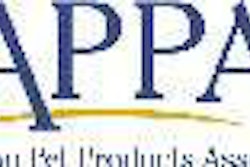US Food and Drug Administration (FDA) regulations to help mitigate the risk of possible transmission of bovine spongiform encephalopathy (BSE or "mad cow disease') among cattle in the US have been in place since 1997. These rules do not have much direct impact on the formulation, processing or labeling of petfoods compared to other segments of the animal feed industry.
However, FDA's "enhanced feed ban" will likely affect the availability (or at least the composition) of some ingredients for use in petfoods. The regulations were originally scheduled to become effective as of April 27, but at the time of this writing FDA announced a postponement in implementation until October 26, 2009.
Existing rules
The current regulations essentially prohibit the feeding of protein-containing mammalian tissues to ruminants (e.g., cattle, sheep and goats). There are exceptions to this rulesuch as gelatin, blood and milk products, plate waste and materials exclusively from swine or horsesbut otherwise inclusion of such materials cause a ruminant feed to be "adulterated" and subject to enforcement action. However, these prohibited materials currently are allowed in non-ruminant feeds, including petfoods.
Also under the existing rules, the labels of non-ruminant feeds that contain or may contain prohibited materials must bear the statement, "Do not feed to cattle or other ruminants." But while distressed or salvage petfoods are also required to bear this statement, the labels of petfoods offered at retail are exempt from this requirement.
What's changed?
In addition to the present ingredient restrictions pertaining to ruminant feeds, the new regulations prohibit specified high-risk materials from all animal feeds, including petfoods. Defined in the regulations as "cattle materials prohibited in animal feed" (CMPAF), these include:
- The entire carcass of BSE-positive cattle;
- The brains and spinal cords from cattle 30 months of age and older;
- The entire carcass of cattle not inspected and passed for human consumption, unless the cattle are less than 30 months of age or the brains and spinal cords have been effectively removed;
- Tallow derived from BSE-positive cattle;
- Tallow derived from CMPAF that contains more than 0.15% insoluble impurities (but ruminants can't be fed any tallow containing more than 0.15% impurities, regardless of CMPAF status of source); and
- Mechanically separated beef derived from CMPAF.
It is important to note that these new restrictions only affect materials from cattle and buffalo and not other species, including other ruminants such as sheep and goats. Also, these rules affect imported as well as domestic products. The exporting country can apply for exemption from these requirements based on its BSE risk status.
Why the change?
It can be debated that the new rules are unnecessary because the 1997 feed ban was effective in its intent. Of the three cases of BSE diagnosed within US borders, one cow was imported, and all were born before (or in some cases arguably at least close to) the implementation of the ban.
Thus, while it is impossible to prove what would have happened had it not been in place, the ban on mammalian protein in ruminant feeds may very well have prevented BSE from establishing itself in the US.
Many people who argued against the new regulations during the proposal stage cited the low incidence of BSE in the US and a high compliance rate with the existing ban. Despite these statistics, FDA considers this enhancement of the ban as prudent to further protect public and animal health.
As explained by FDA, "The removal of high-risk materials from all animal feed will protect against inadvertent transmission of the agent thought to cause BSE, which could occur through cross-contamination of ruminant feed, with non-ruminant feed or feed ingredients during manufacture and transport or through misfeeding of non-ruminant feed to ruminants on the farm."
What's the effect on petfoods?
The bulk of the burden imposed by the new regulations will fall on the rendering industry. It will impact what animals they accept, how materials are segregated and processed and to whom products may be distributed. However, exclusion of CMPAF from protein meals will likely affect composition, costs and availability of rendered products. Thus, petfood manufacturers may need to reformulate products based on these factors.
Very importantly, there is no provision to allow manufacturers to deplete inventories of ingredients or to sell products containing CMPAF after the ban takes effect. Although implementation was delayed until the fall, by the time you read this there will be only a few months remaining to bring all products into compliance.
One aspect that may have been considered during development of the regulation but did not make it into the final rule was a change in the labeling requirements for petfoods. Even with implementation of the new requirements, a petfood intended for retail sale does not have to bear the label statement warning about feeding it to ruminants. However, this labeling exemption does not apply to petfood products sold for animal feed (e.g., out-of-spec, past the sell-by date, in damaged packaging or otherwise unfit for retail sale).
While the renderer may bear the brunt of the responsibility as the regulations are written, FDA expects all parties to practice due diligence in excluding CMPAF from their respective products. Thus, it is prudent for petfood manufacturers to familiarize themselves with the new requirements. This material may also be helpful in answering consumer concerns regarding the risk of the BSE agent in petfoods.















